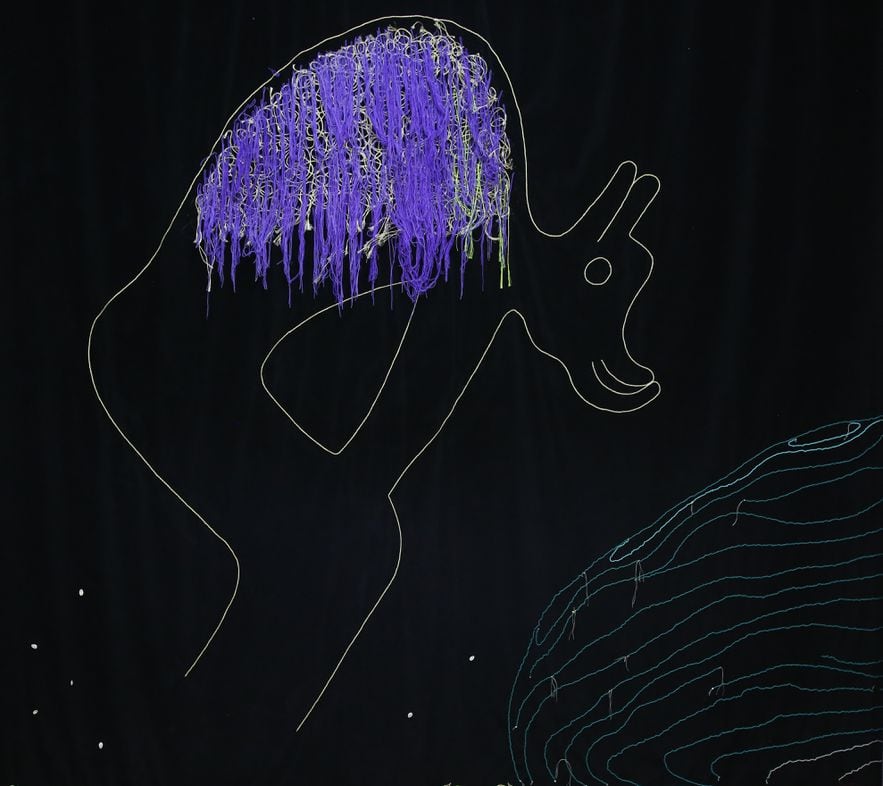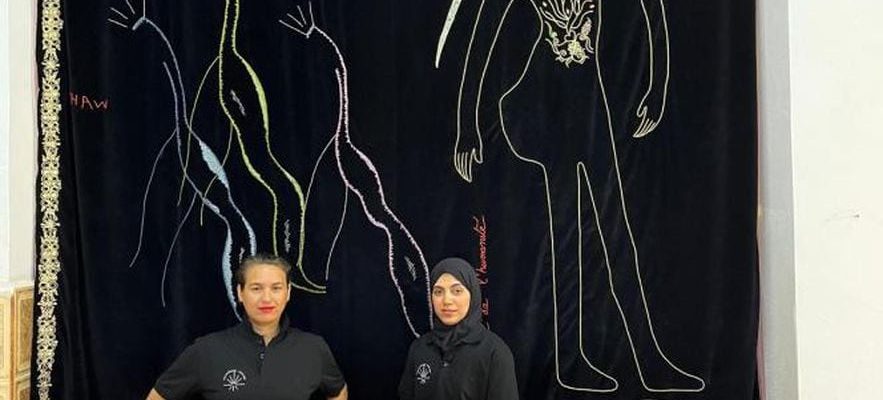A huge textile shelter located in the middle of a large Parisian contemporary art center: the initiative, both spectacular and intimate, catches the eye and can be discovered both inside and outside. At its source: a significant price. The one that, since 2009, the SAM Art Projects organization has awarded each year to an artist residing in France, carrying out a project abroad, outside the major places of the art market, which, once realized, exhibited at the Palais de Tokyo.
Winner of the 2021 edition, represented by the Cécile Fakhoury gallery, Dalila Dalléas Bouzar, who was born in Oran in 1974, lives and works in Bordeaux. To develop this disproportionate project, she drew her inspiration from the site of Tassili N’Ajjer, in the Sahara desert, in the south-east of Algeria. This gigantic rocky plateau is home to one of the most exceptional sets of prehistoric engravings in the world. Enough to arouse the curiosity of the Franco-Algerian artist who has been interested in rock art for a long time.
Dalila Dalléas Bouzar (left) and embroiderers Maram Bouzar, Selma Bouzar and Halima Benzita, in Tlemcen, June 2023.
/ © Hakim Benmouna
In the spring of 2022, she traveled around the place, reinterpreting in her notebooks these age-old paintings representing human or animal figures, plant symbols or even signs linked to gender and sexuality. Dalila Dalléas Bouzar then began embroidering her designs on the 30 meters of black velvet intended to form a monumental tent. It was in Tlemcen, a center of Algerian weaving, that, under his direction, professional and amateur embroiderers took up tapestry. A work that could not be more complex due to its extraordinary dimension, which required hours and hours of work, sometimes to the point of undoing to better redo, because the creator developed her work on the spot, each step deciding to the one to come.
Appropriately titled Infinite Ship and erected at the Palais de Tokyo until January 7, under the curatorship of François Piron, this original structure, which she decorated with colored pearls, is fully in line with the artistic approach of the visual artist, who questions, in particular, the fantasized vision of the Orient, as in his series Women of Algiers according to Delacroix (2012-2018), or the history of dominations, with its revisitation, in 2018, of Saint George and the dragon by Raphael. In the ancestral engravings of Tassili N’Ajjer, which date back to the Neolithic, Dalila Dalléas Bouzar sees a “unique testimony to human history and the representation of a utopia”: their distant past refers, according to her, to “a continuum which transports us to an infinite future, beyond the dominant questions constituting Algeria’s recent past.

Dalila Dalléas Bouzar, “Infinite Vessel” (detail), 2023.
/ © Courtesy Galerie Cécile Fakhoury, Abidjan-Dakar-Paris
The result of collective artisanal work, designed as “a meditative, dreamlike, intimate and ritualized space”, the velvet pavilion with its delicate ornaments appeals to visitors’ eyes as well as their ears. They can enter freely, but also listen to podcasts Vintage Arabic produced by historian Hajer Ben Boubaker as well as sound creation by DJ Paloma Colombe. And perhaps even attend a performance by the artist, an exercise with which Dalila Dalléas Bouzar is familiar, her creative process often being accompanied by a staging of herself, on the borders of dance, storytelling and of the ritual.
